Art
March 10, 2020
Shannon Finnegan on Accessibility and Disability Culture and her Outreach Residency with Girls Athletic Leadership School (GALS)
We are beyond excited to share about a multi-week, teen-specific outreach residency happening now with award-winning multidisciplinary artist Shannon Finnegan. Our Outreach programs bring exhibiting artists, local professionals, and more into a school setting, with each program taking on its own identity. Beginning on February 24, GALS art teacher Erica Gonzalez turned her classroom over to MCA Denver and Finnegan for this residency, which is taking place at both MCA Denver and GALS. This residency will conclude on March 15.
Finnegan’s work examines the complexity of disability culture and raises crucial questions about which bodies and persons are implicitly and explicitly excluded in different spaces. Through her art practice, Finnegan thinks about how we can move towards better and more nuanced approaches to access. She often uses humor to challenge conventional ideas of access and creates work the viewer is invited to participate in. One of the projects Finnegan has been working on over the past year involves alternative text (which she will discuss in this interview). Most times alt-text can only be read if someone is using a screen reader, but here we’ve included it as a caption underneath each image, following Finnegan’s example on her Instagram.
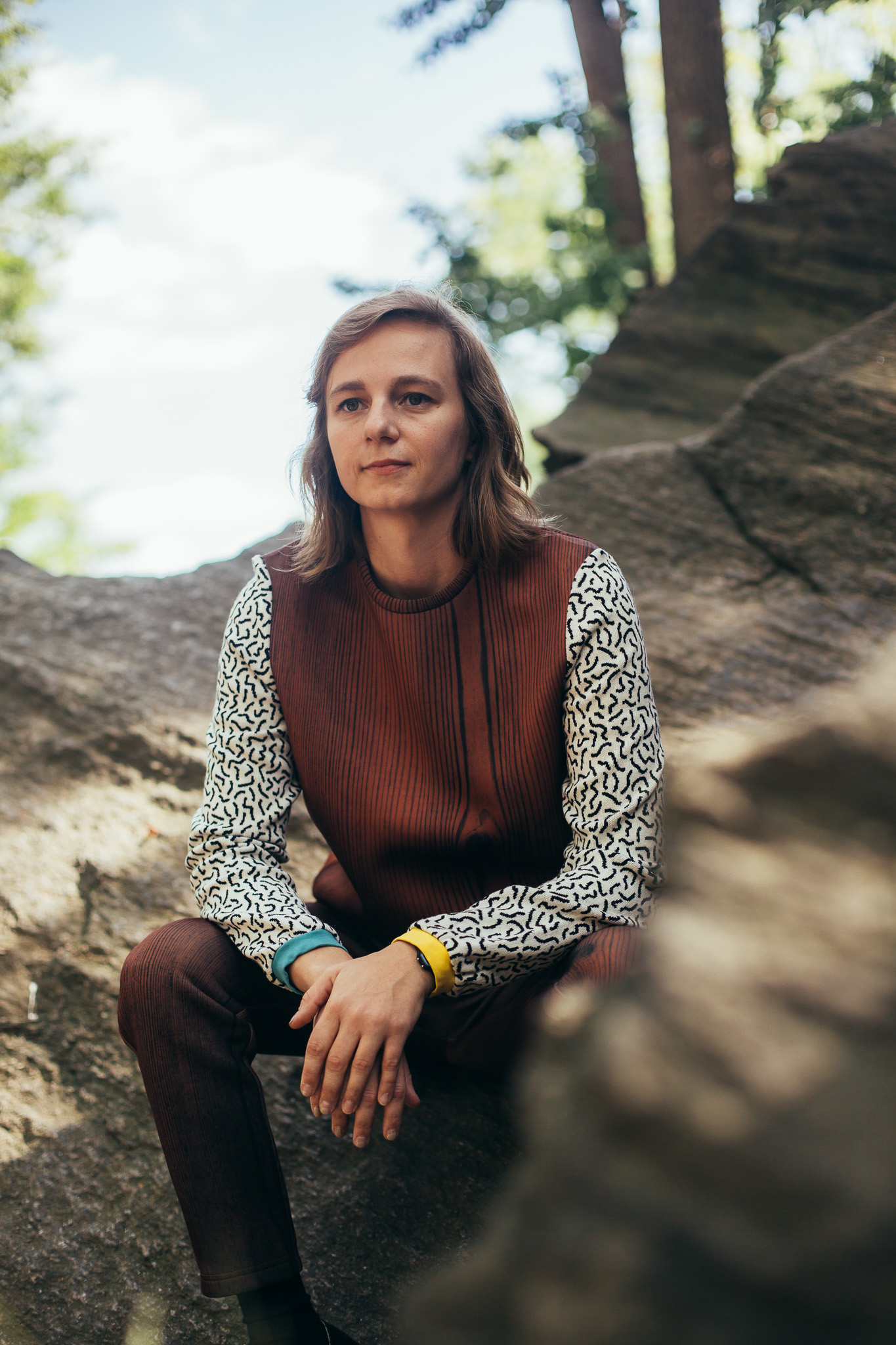
Your work addresses the complexity of disability culture. At what point did you start addressing this in your practice and your work?
I’ve been disabled my whole life and that experience has always been a thread in my work. About five years ago, I decided I wanted to make work that spoke more directly to my experience of disability and that is when I made Self-Portrait.
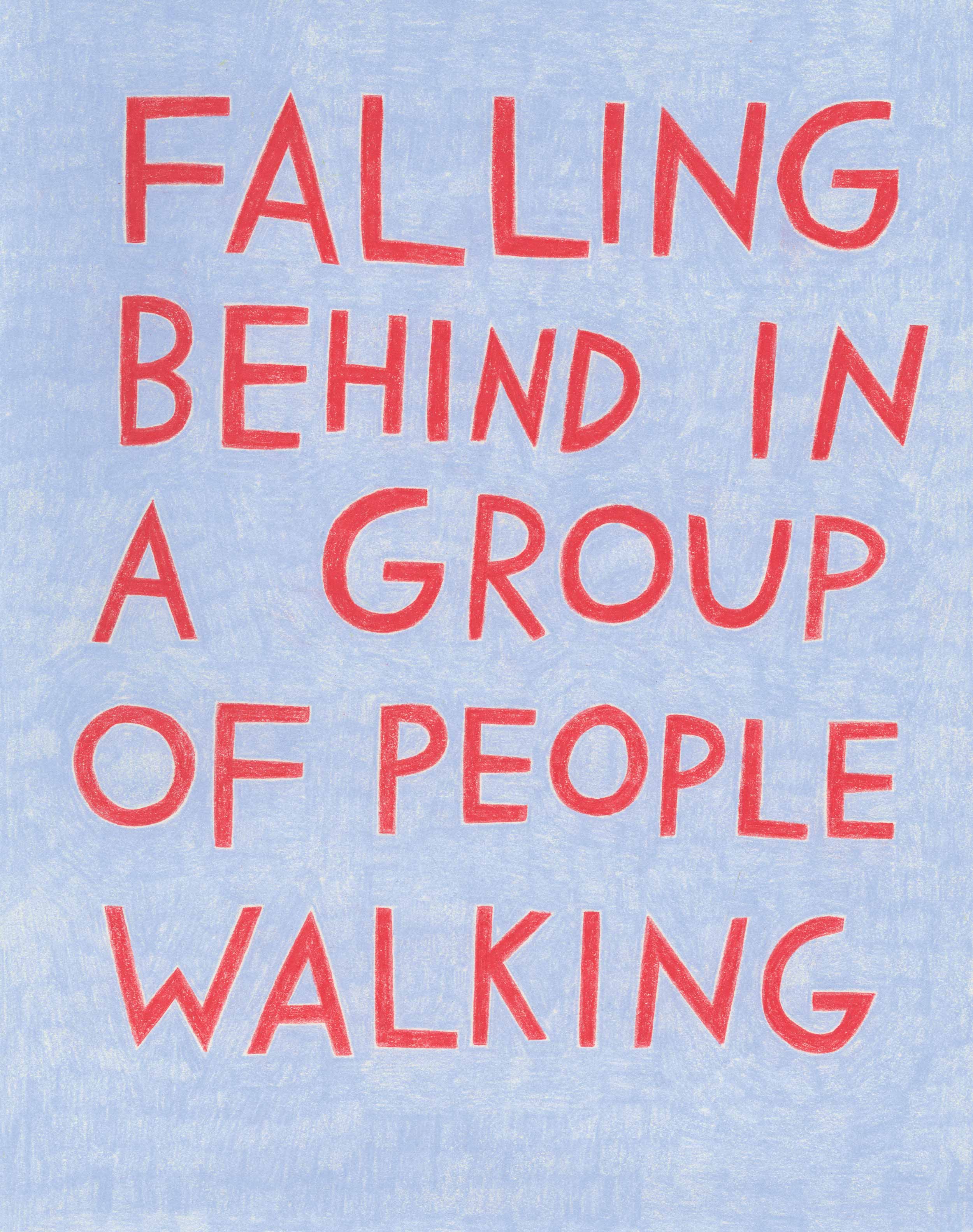
Can you tell us a little bit about what you’ll be doing with GALS, and what you think the importance is in introducing contemporary art to students in schools?
I’m working with two classes at GALS to make an installation for the Upper Idea Box at the MCA. We started by talking about Talia A. Lewis’s (who also goes by TL) working definition of ableism and how ableism manifests in the design of public spaces. We’re still figuring out together what we are going to make but some of our guiding questions are:
Who was this space (including museums and schools) created for?
Who cannot be here or is not welcome here?
What are ways of disrupting ableism in this space?
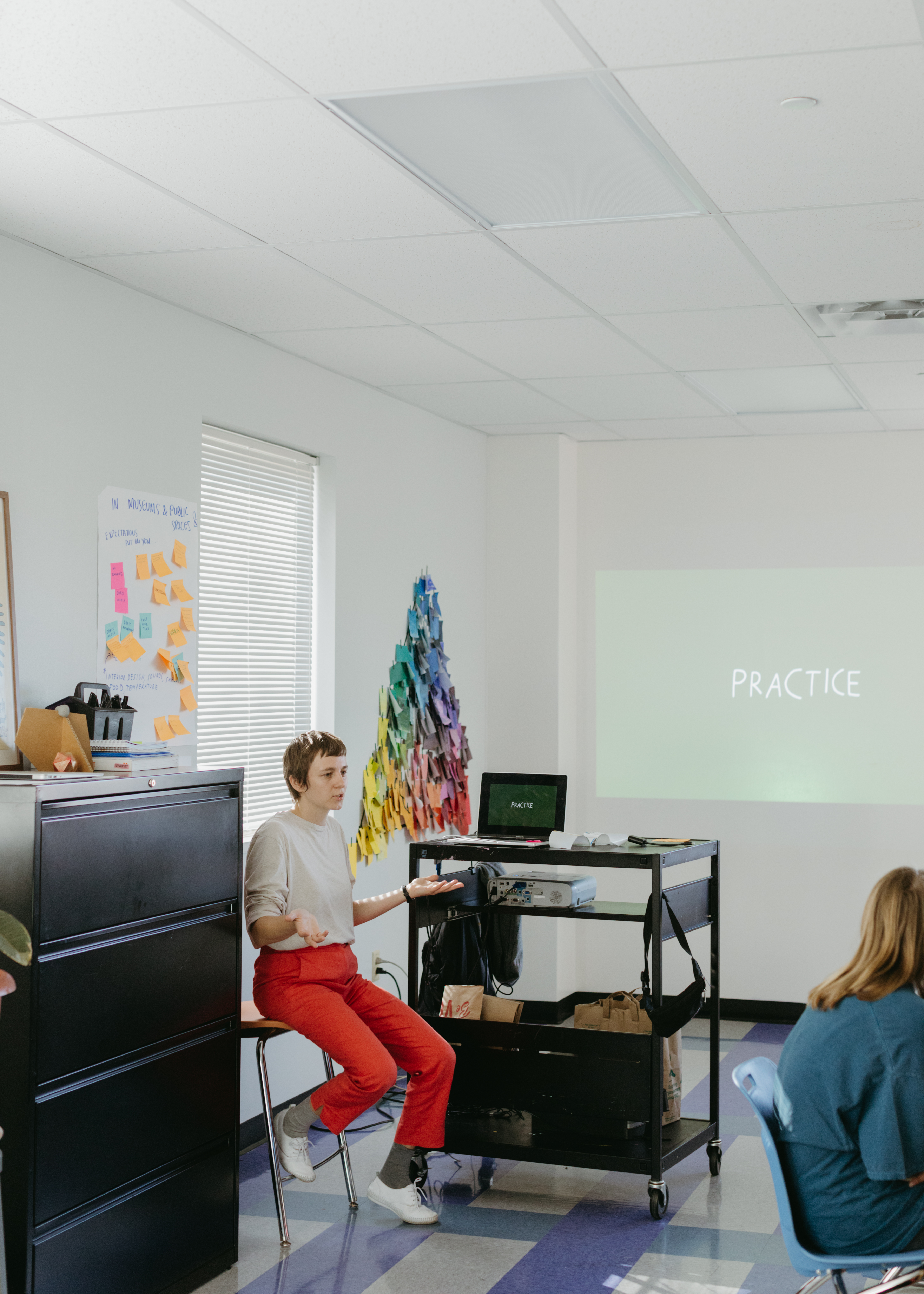
Tell us about the Anti-Stairs Club Lounge and how protest of certain spaces serves as an artistic act and form of criticism?
Anti-Stairs Club Lounge is an ongoing project that gathers people who share an aversion to stairs. The first iteration of the project was at Wassaic Project, an exhibition space that has seven floors with no ramps or elevator above the first floor. The lounge was a space exclusively for visitors who couldn’t or chose not to go upstairs. It included seating, reading materials, chilled seltzer, plants, and a charging station.
The second iteration of the project gathered fifty disabled and non-disabled people to protest the Vessel at Hudson Yards. Vessel is a building-sized, basket-like structure made of 154 interconnected stairways created by designer Thomas Heatherwick. From its inception, Vessel has centered the experience of climbing stairs and imagines a public without people unable, unwilling, or uninterested in climbing stairs. This version of the lounge included seating, cushions, snacks, signage, and custom fluorescent-orange beanies worn by participants that all signed a pledge stating: As long as I live, I will not go up a single step of the Vessel.
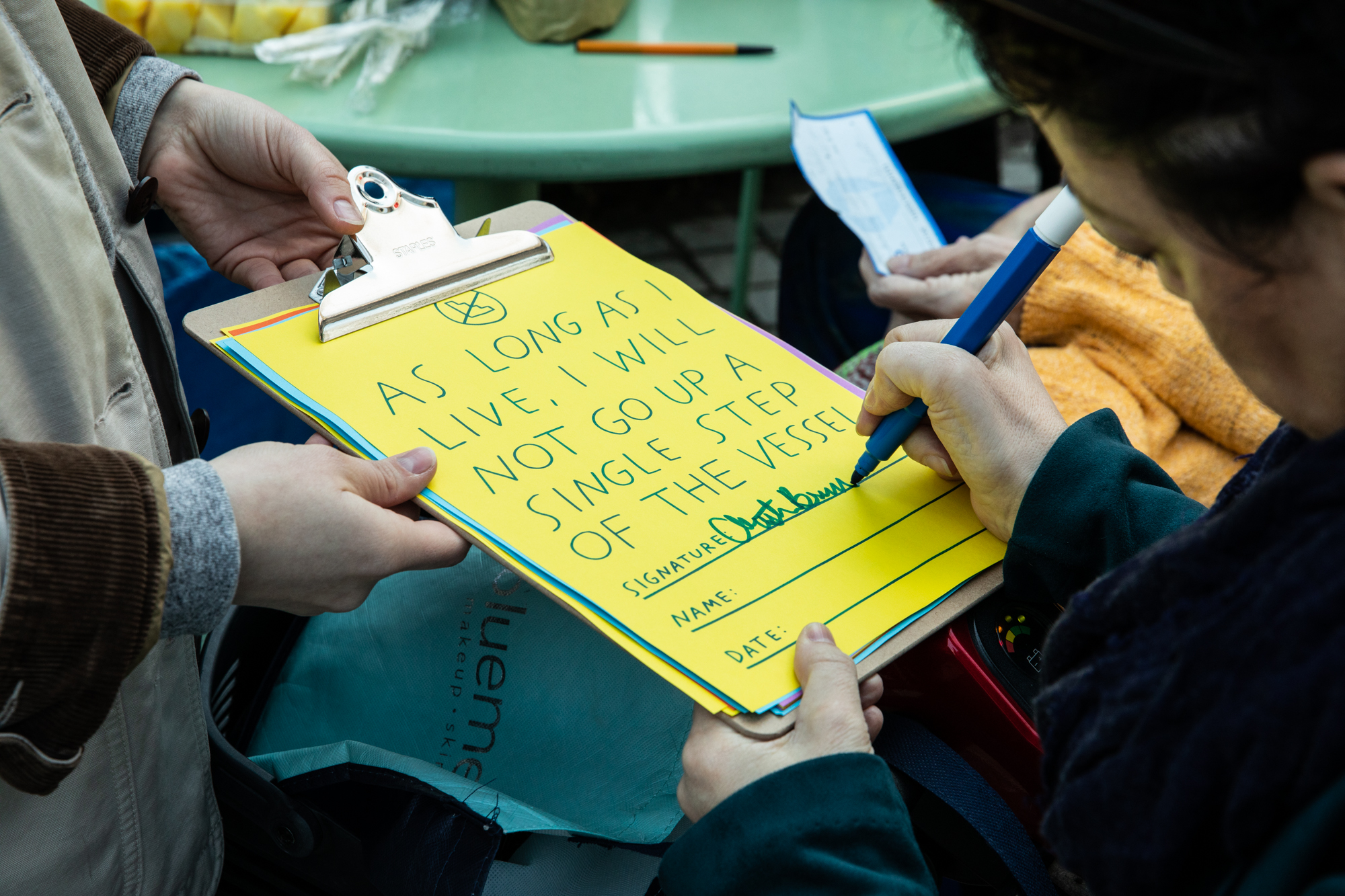
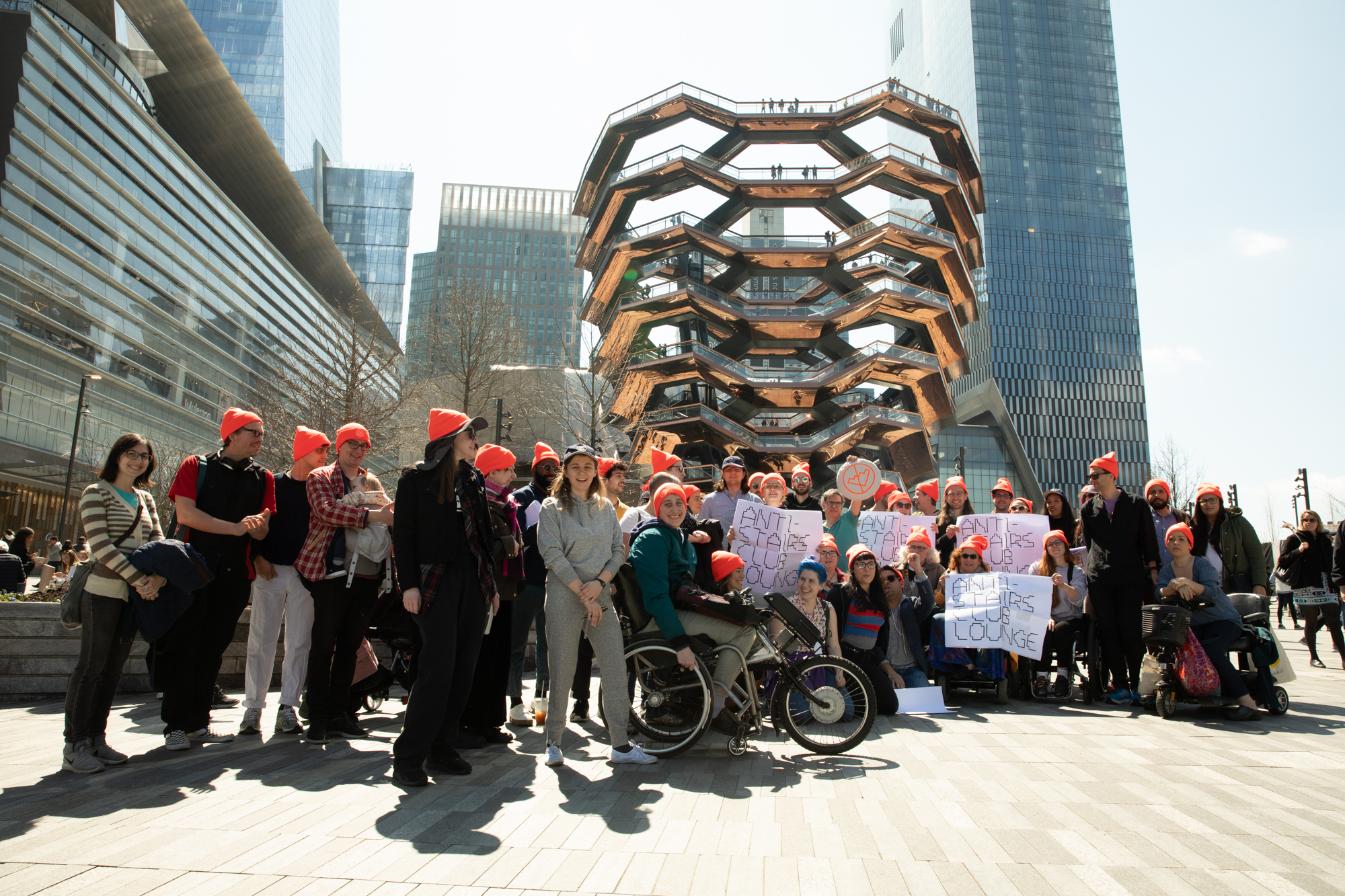
Over the past year, you’ve been doing a project about alternative text. What is alt-text and in what ways does the digital world need to evolve in its understanding of disability?
Alt-text is an essential part of web accessibility. It is a system of text descriptions built into websites that makes visual content accessible to blind people and people with low vision. Alt-text is often overlooked altogether or understood solely through the lens of compliance. The resulting alt-text is written in a reluctant, perfunctory style, but it has tremendous expressive potential. And there are tons of interesting and complex questions that come up when translating visual information into text!
Over the past year, I’ve been doing a project with artist Bojana Cokylat called Alt-Text as Poetry. We developed a workshop curriculum that introduces people to alt-text, gives them a chance to practice describing images, and time to talk about the process. By framing alt-text as a type of poetry, we ask workshop participants to approach writing it with ideas and strategies borrowed from the world of poetry.
Instead of focusing on compliance and doing the minimum, what if we approach alt-text creatively and generously, centering disability culture? And more broadly, how do we make spaces and experiences that disabled people not only can access but want to access?
How can people become more aware and educated on disability culture in their day-to-day life? How can people think critically about their preconceived notions and the way we are socialized to participate in the “othering” of various groups of people?
Look to disabled people as leaders! Buy their books or request them at your library, follow them on social media, share their work with your communities, amplify their insights and perspectives. These are some of the people that I have learned from and continue to learn from:
Leah Lakshmi Piepzna-Samarasinha
Among many others!
How can museums specifically promote and recognize a more inclusive community?
Hire disabled people, curate the work of disabled artists, and make learning about disability and ableism part of the ongoing work of the institution, both internally and in public-facing forums. Accessibility in the Arts: A Promise and a Practice by Carolyn Lazard is a good place to start!